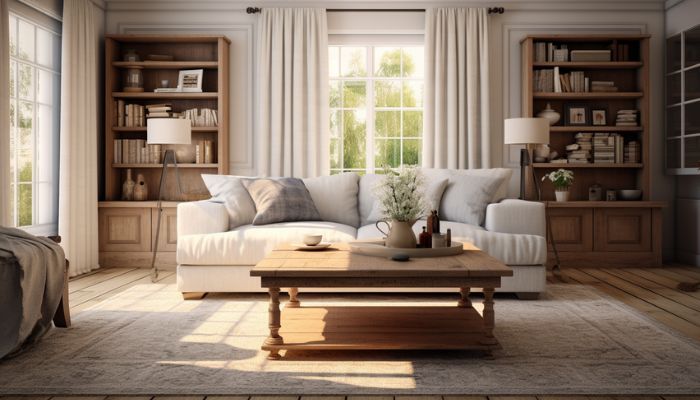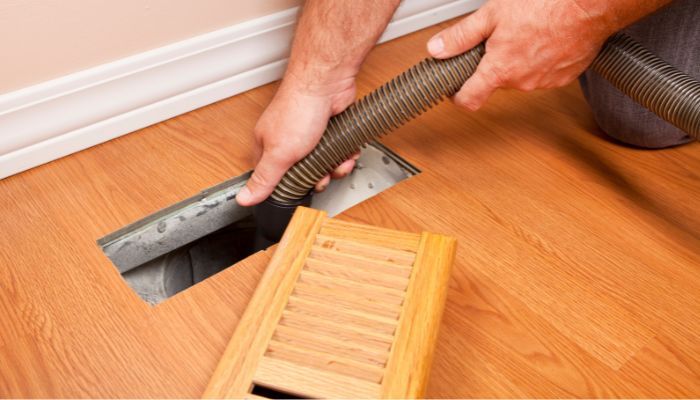Couch Confidential: Professional Tips for Upholstery Upkeep

Upholstery fabric care is important for extending the life of furniture and ensuring it looks fine. This article will cover the fundamentals of upholstery fabric care as well as quick fixes such as addressing spills and stains promptly, tips for routine maintenance, and when it is advisable to call the pros for a deeper clean.
The Fundamentals of Upholstery Fabric Care
Upholstery fabric care is essential in order to maintain the comfort and look of your furniture. It is important to understand the fundamentals of how to properly care for upholstery fabric in order to prevent wear and tear, fading, and other damage that can occur over time. Moreover, with the right care and maintenance, upholstery fabric can stand the test of time.
Cleaning is the most important step in upholstery fabric care. Vacuuming regularly is a simple way to remove dust, dirt, and debris. This step helps to prevent build-up and stains. In addition, it is important to use a cleaning solution specifically designed for upholstery fabric. There are a variety of cleaners that can help remove tough stains and grime, and it is important to find the one that is right for your furniture.
When tackling a stain or spill, it is important to act quickly to prevent the stain from becoming permanent. It is best to use a blotting technique, beginning from the outer edges of the stain and working in towards the center. While using a cleaning solution, make sure to test the solution on a small area of fabric first to make sure the color is not running. Similarly, when selecting an upholstery fabric, it is important to choose one that is labeled as ‘stain-resistant’ or ‘easy to clean’.
It is also important to protect furniture and upholstery fabrics from direct sunlight and heat. The fabric can quickly fade or become discolored from intense sunlight, and the heat can cause fabrics to become brittle or dry. This is especially important in rooms that receive direct sunlight. Consequently, it is important to rotate furniture from time to time and arrange it in a different area if possible. Using curtain or drapes that reduce the amount of sunlight in a room can also help.
Overall, proper upholstery fabric care can help extend the life of your furniture for many years. It is important to clean and maintain furniture regularly for the best results. Furthermore, using fabric protection can also help keep it looking like new for a longer period of time. By following the steps above, you can keep your furniture looking beautiful for many years to come.
Quick Fixes: Addressing Spills and Stains Promptly
Quick fixes are a necessity when it comes to addressing spills and stains promptly. Unfortunately, many people tend to wait before taking action, resulting in a bigger mess that is more difficult to remove. However, by responding quickly, you can dramatically reduce the chances of a permanent stain and make clean-up much easier.
In addition, when dealing with a spill or stain the first thing to do is to absorb as much of the liquid as possible. For instance, a lint-free cloth can be used to blot the area gently, removing the substance and as much of the moisture as possible. Moreover, using a clean, wet cloth can aid in rinsing out the residue.
Furthermore, gently scrubbing the area with a mild detergent may assist in removing the stain. Similarly, a slight rubbing or dabbing with a brush also may be applied to the area, but take care not to rub or brush too hard, as this can spread the stain or cause further damage to the surface.
On the other hand, if a stronger cleaning solution is needed for heavily soiled areas, use one that is designed for the specific stain or spill type, such as grease stains, oil stains, clothing stains, etc. Make sure to follow the instructions on the packaging and test the cleaner on a small inconspicuous area of the surface before using it on the stain.
Consequently, when it comes to spills and stains, the best approach is to act quickly and try the gentlest methods first. By taking these steps, you may be able to reduce your mess to a mere memory.
Routine Maintenance: Extending the Life of Your Furniture
Maintaining your furniture is an important part of keeping it looking attractive and in good condition for years to come. Developing a routine for cleaning and care is essential to extend the life of your furniture. Moreover, in order to ensure you get the maximum life out of your furniture, regular maintenance is essential.
To begin, a good routine for maintaining your furniture should involve wiping surfaces with a soft cloth regularly to remove dust and particles. It’s also important to keep an eye out for spills and other accidents and to clean them up as soon as possible. Furthermore, depending on the material of your furniture, periodic deep cleans with a trusted cleaner may be necessary to remove tougher spots and stains.
In addition, avoiding direct sunlight or other sources of heat and humidity can help ensure the longevity of your furniture’s finish. Similarly, checking and replacing any worn parts as necessary, such as loose joints, flaking paint, or cracked boards, will alleviate the issue of breakdown. For instance, as furniture is loaded and shifted around, legs may loosen over time, so it is important to ensure each piece is sturdy and secure.
As a result, the combination of routine cleans, addressing any issues quickly, and avoiding direct sunlight or humidity will help you get the most out of your furniture. Moreover, in general, taking care of your furniture through regular maintenance is the only way to truly extend its life. Consequently, it’s always a good idea to make sure you have a routine maintenance schedule for all of your furniture.
Knowing When to Call the Pros: Upholstery Deep Cleaning
Knowing when to call pros for upholstery deep cleaning is an important decision. The most common signs that indicate professional intervention is required is when there is a noticeable and persistent level of dirt and dust present on the surface of the upholstery, or if there are permanent stains that do not come out with regular spot cleaning. Furthermore, bad odors are another strong indicator that upholstery should be cleaned at a professional level.
On the other hand, regular care and maintenance of upholstered items can help to defer the need for professional intervention. Vacuuming regularly can help to remove dirt and dust, while spot cleaning with an appropriate physicochemical-compatible cleaning solutions helps to remove localized stains. Moreover, using protective covers on upholstery can prevent spills and dirt from penetrating deep into the fibers.
In addition, there are several tell-tale signs that indicate it is time to seek professional intervention. Professionals will be able to see deeper into the fibers and evaluate whether the material is substandard, or if there is any issue that regular cleaning and maintenance will not be able to handle. Similarly, professional cleaning solutions can be used to remove deep-seated dirt and oil that could be causing bad odors.
As a result, deep cleaning techniques can restore the upholstery to its former glory. Professional deep-cleaning treatments can be used to achieve a superior level of cleaning that is not achievable by regular cleaning methods. Professional upholstery deep cleaning solutions are particularly helpful in the case of furniture and carpets that have seen heavy use over the years or rare and delicate fabrics.
Consequently, upholstery deep-cleaning should be considered for structures that not only require a good cleaning, but one that is beyond the capabilities of a regular household vacuum cleaner. In order to achieve the desired level of cleaning, professional intervention may be necessary, and it is important to know when to call in the pros.
For Your Home’s Upholstery Care Calle Cleaner Choice
Upholstery fabric care requires a combination of immediate responses to spills and stains, routine cleaning and maintenance, and well-timed professional cleaning for items that are too far gone. Prompt action is important to prevent permanent discoloration or a permanent stench. Proper fabric care means regular vacuuming, spot-treating of spills, and protecting upholstery from direct sunlight or excessive moisture. If needed, professional cleaning can also provide deep cleaning to address fabric damage that has become difficult to manage. Ultimately, proactivity and attention to detail will ensure the longevity and durability of your upholstered furniture.
FAQ
How often should I have my upholstery professionally cleaned?
Ideally, upholstery should be professionally cleaned every 12-24 months, depending on the level of use and wear. Households with children, pets, or high foot traffic might require more frequent cleanings, perhaps closer to the 12-month mark, to maintain the upholstery’s appearance and longevity. Regular vacuuming between these deep cleaning sessions can help in keeping the upholstery in top shape.
What’s the best way to address a fresh spill on my couch?
For a fresh spill, act quickly! Gently blot (don’t rub) the spill with a clean, absorbent white cloth to remove as much liquid as possible. Avoid rubbing as it can push the spill deeper into the fabric. Once blotted, check the upholstery tag for cleaning instructions. If water-based cleaners are permissible (typically indicated with a “W” on the tag), you can dab a mixture of mild detergent and water onto the stain, then blot again. Always test any cleaning solution in an inconspicuous spot first.
How can I prevent my upholstery fabric from fading over time?
Upholstery fabric, especially when exposed to direct sunlight, can fade over time. To minimize fading, keep your furniture out of direct sunlight by positioning it away from windows or using blinds, drapes, or window films. Rotating cushions periodically can also ensure even wear and reduce the chances of noticeable fading in high-use areas.
Are there any common household products I should avoid using on my upholstery?
Yes, avoid using bleach as it can damage and discolor your upholstery irreversibly. Stay away from undiluted white vinegar and excessive amounts of baking soda, as they can weaken fabric fibers over time. It’s always best to refer to your furniture’s care instructions and to test any cleaning solution on an inconspicuous spot before applying it to a more visible area.






